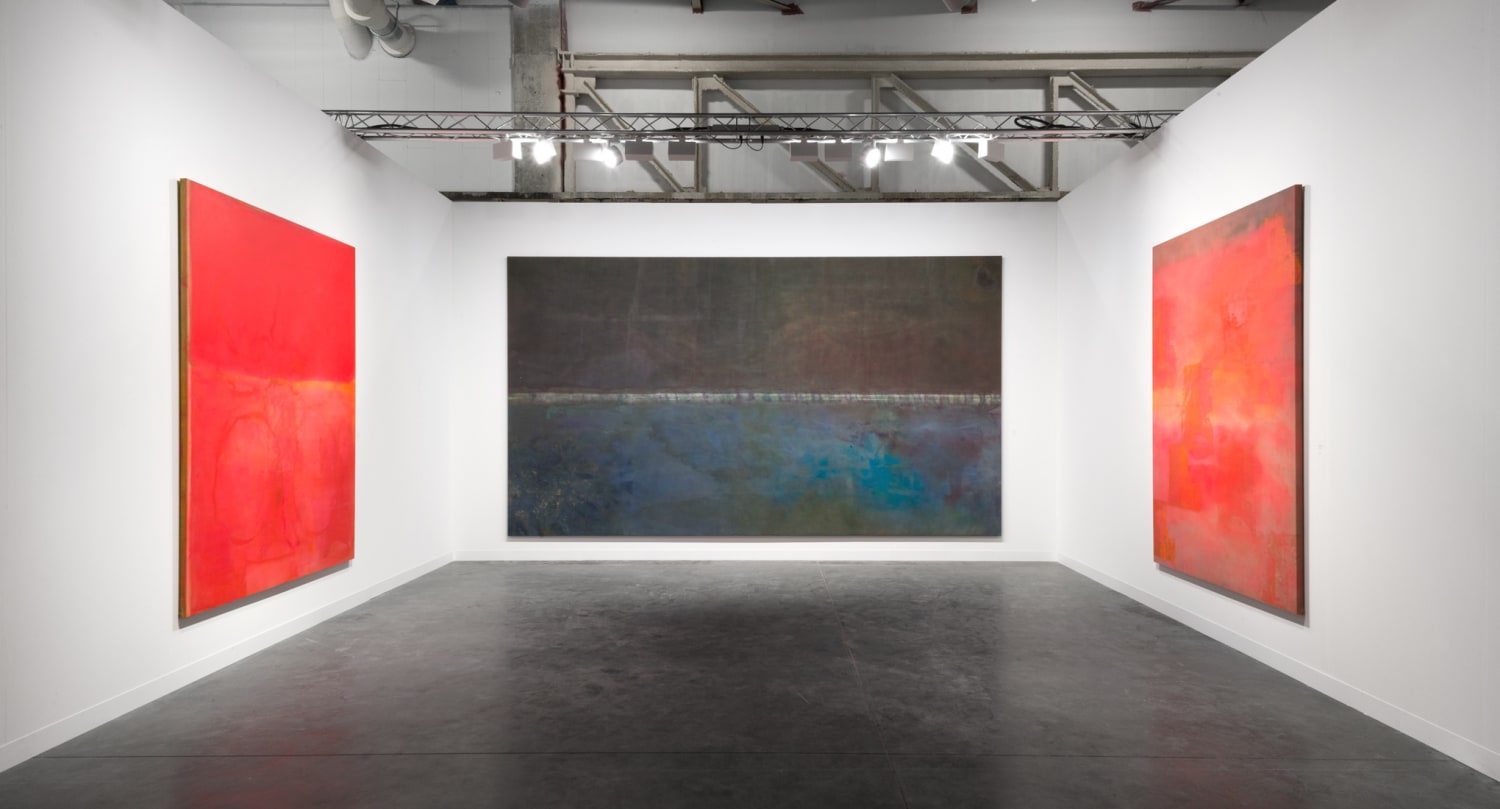Art Basel Miami Beach | Booth S5 : Survey: Frank Bowling
Survey: Frank Bowling
Booth S5
Art Basel Miami Beach
Hales is delighted to announce a unique presentation of historic works by Frank Bowling at Art Basel Miami Beach 2017.
Frank Bowling OBE RA began his artistic career at the Royal College of Art in London, before moving to New York in 1966 with the aid of a Guggenheim Fellowship. This move across the Atlantic and Bowling’s subsequent immersion in New York’s creative scene marked a defining moment in the painter’s career: his break with figuration and entrance into a new world of abstraction—or what he has called ‘pure painting’. This presentation focuses on three significant and distinctive canvases produced during these formative early years in New York: the Map painting ‘In The Family G.E.P.’ (1968–70); an enigmatic portrait of Bowling’s two young sons, ‘End Run’ (1969); and ‘For Edvins’ (1972–73), a pure and expressive abstraction. Together, the paintings reveal Bowling’s discovery of his unique voice as one of the most influential painters still working today, capturing his quintessential blend of colour and geometry, improvisation and structure, abstraction and representation. The presentation will coincide with ‘Frank Bowling: Mappa Mundi’ at Haus der Kunst in Munich, a major solo exhibition of Bowling’s monumental paintings curated by Okwui Enwezor (22 June 2017–7 January 2018). Enwezor’s exhibition, a comprehensive overview of Bowling’s large-scale paintings, takes the late 1960s as its starting point, reflecting the historical importance of this particular period – the same period explored in the Hales display at Art Basel Miami 2017 – in Bowling’s oeuvre. The ‘Mappa Mundi’ exhibition at Haus der Kunst will travel to the Sharjah Art Foundation, UAE and to the Irish Museum of Modern Art, Dublin.
Above all, the works in this presentation powerfully express the excitement of Bowling’s spirit and energy fostered by his arrival and integration into the dynamic, competitive creative scene in New York. His politically charged art criticism for Arts Magazine had attracted the attention of Lawrence Alloway, who included Bowling in the 1969 exhibition ‘5+1’ alongside painters Al Loving, Jack Whitten and William T. Williams and sculptors Daniel Johnson and Mel Edwards. Many of these same important abstract artists were selected, along with Bowling, for the historic 1971 exhibition ‘Contemporary Black Artists in America’, curated by Robert Doty. Doty subsequently gave Bowling his own solo exhibition at the Whitney that year, a landmark achievement which resulted in Bowling’s first encounter with critic Clement Greenberg. Greenberg, who became a regular visitor to the painter’s studio, was an important influence, encouraging Bowling to delve deeper into the history and theory of abstraction.
In the ambitious paintings from this time, the social and political imagery and narrative of earlier work was replaced by an increasing focus on material, process and colour and a search for new possibilities for painting. Expressive fields of colour, carefully structured by an underlying geometry, were rendered in translucent washes of acrylic paint – a fusion of painterly skill and improvisational virtuosity. In some works (including ‘End Run’ and ‘In the Family G.E.P.’), silk-screen printed or stenciled signs – photographs of Bowling and his young sons Dan and Sacha, the iconic ‘maps’ outlining southern continents and Bowling’s native Guyana – emerge from the layers of paint. These ghostly and ambiguous presences, combined with the paintings’ poetic, evocative titles, allude simultaneously to intensely personal experiences and public narratives in a post-colonial context.
As the global art community’s attention increasingly comes to recognise the historic and aesthetic significance of Bowling’s paintings, this presentation thus puts the spotlight on a pivotal moment in Bowling’s career: his arrival in New York, the discovery of his voice as a master of abstraction, and the critical and institutional acclaim which followed.





